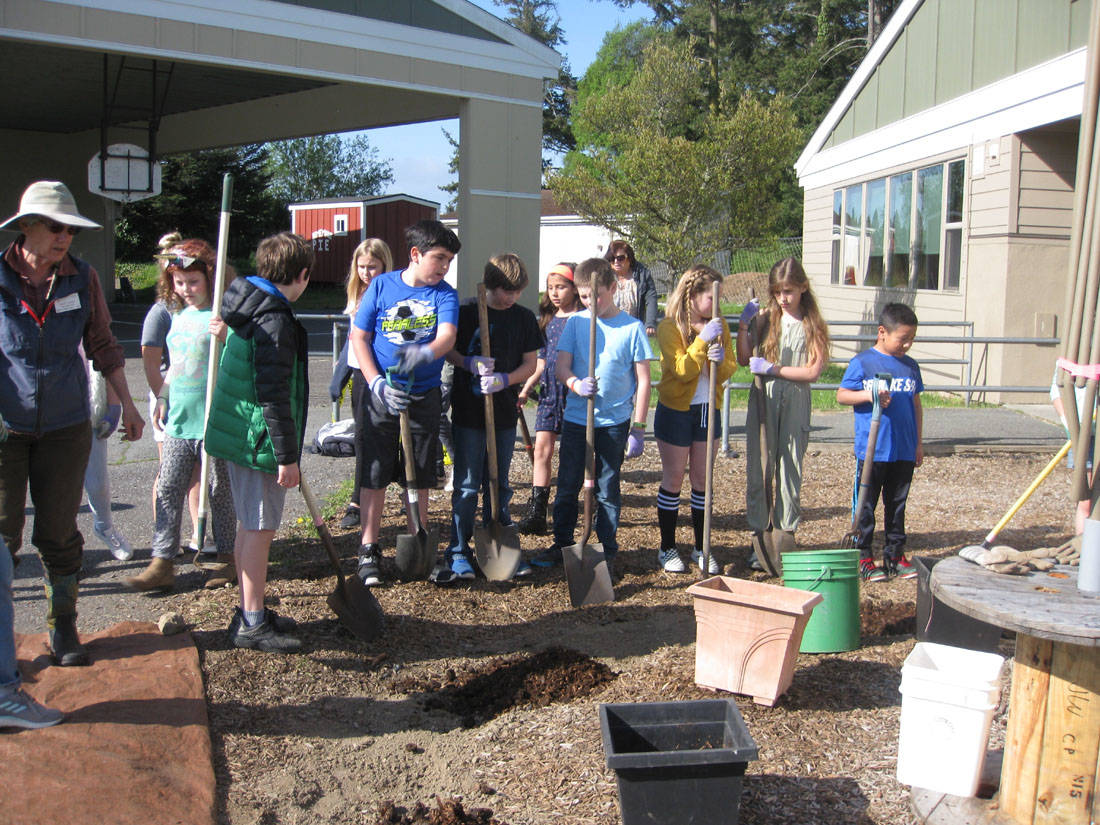Teaching children how to grow food and garden has been a master gardeners’ project for several years, and they have partnered with the Friday Harbor Elementary School to plant a garden in the playground area. This year, the focus was designing a bean teepee.
“I have been impressed with their [the children’s] enthusiasm,” said Marty Ahart, a master gardener, who donated scarlet runner beans for the project. Master gardeners are part of the Washington State University Extension Agency that trains volunteers to serve their communities through horticultural education and outreach.
The first step to building a bean teepee was to shuck all the beans. Scarlet runners, Master Gardener Fiona Norris explained, have long pods with brilliant red beans inside. The students, she said, were amazed by their color, as well as the process. This species is well loved by hummingbirds too, Norris added, since, unlike other varieties, their blossom is an orangey red. Both the flower of scarlet runners, and the beans are edible.
Step two of the project was to measure the circle of the teepee. Cattle Point Rock and Soil donated soil for the project after the gardeners realized the dirt at the school was heavily compacted and had no nutrients for the plants.
Poles for the beans to grow up to create the teepee were then put in place.
“This type of bean grows fast and tall,” Norris said, so they needed to accommodate their height in their design. Seeds were planted along with corn and squash.
“The third graders have been working on the three sisters project,” said Norris.
The three sisters refer to the tradition of planting corn, squash and beans together. These plants, Native Americans learned hundreds of years ago, are beneficial to each other. The tall corn provides stalks for the beans to grow. The bean plants naturally add nitrogen to the soil which both the corn and squash love, and large leaves of the squash keep the soil shaded and moist, and help keep weeds out.
“These kids are great at teamwork,” Ahart said, noting that every single Friday Harbor elementary student played a role in the garden, learning how produce is grown.
At the end of the school year, Norris explained, the vegetables are harvested, and the children are treated to a soup and salad treat. During the summer, volunteers continue to water the garden, and any produce is taken to the local food bank.
“I am amazed by their energy,” said Norris. “Gardening is hard work, and they were excited to do all of it.”



